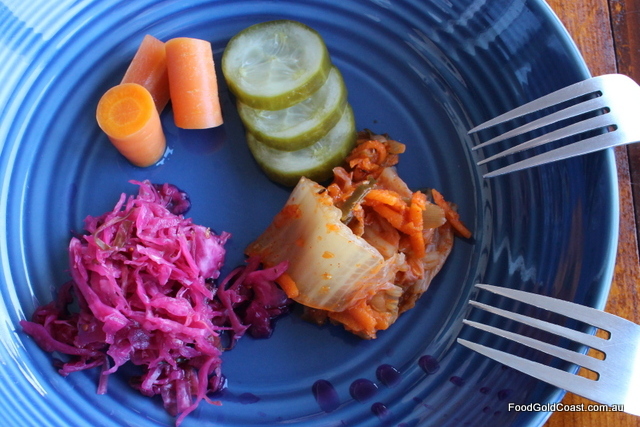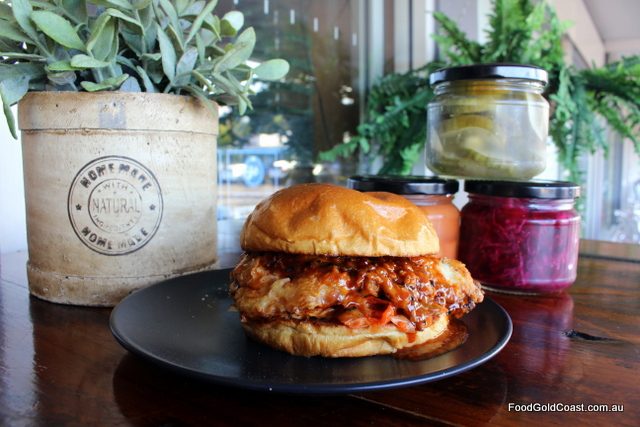Sauerkraut, kombucha, kimchi, … What do these foods have in common, and why should we include them in our diet?
They are all fermented. Long before we had refrigeration, fermentation was used to preserve food that would otherwise go to waste.
Many cultures also realised fermented foods’ contribution to health, its ‘good’ bacteria contributing to a healthy digestive system.
The intestine is now the focus of medical attention as a core component of our health. Good gut flora helps with digestion, absorption and assimilation of nutrients, as well as enhancing our immune system. Stressful lifestyles and a diet of refined foods can put our bodies out of balance, enabling bad bacteria to flourish. Including probiotic-rich fermented foods is thought to bring the gut back into balance.
Some restaurateurs are also taking notice, slipping a little fermented chilli, sauerkraut or kimchi onto their menus.
Husband and wife chefs Helen and Craig Pope of The Good Wolf have taken fermentation a bit further, selling bottles of fermented vegetables such as sauerkraut, carrot and cucumber in their Miami café. Fermented vegies also find a place on their award-winning burgers, such as the Mini Kung Pao Burger.
“You don’t need huge amounts of fermented foods to improve your gut health,” Craig tells us. “A small amount three or four times a week is enough. Supplement your salad with a little sauerkraut or add kimchi as a side to a piece of cheese to help digestion.”
Other fermented foods we can include in our diet are yoghurt, kefir, miso, lassi and tempeh.
Craig gives us a simple recipe to make sauerkraut at home, or visit their restaurant at:
The Good Wolf, 110 Mountain View Avenue, Miami Ph: 07 5607 0775
Read our review of The Good Wolf here.

| Servings |
|
- 1 head drum head or common cabbage
- 2 tbsp sea salt
- 1 tsp mustard seeds
- 1/2 tsp caraway seeds
Ingredients
|

|
- Remove and put aside the two outer leaves of the cabbage. Slice the rest of the cabbage thinly.
- Add salt and massage well (2 – 3 minutes).
- Put aside to rest for 30 minutes.
- Massage the cabbage again for 2 – 3 minutes.
- Put into a clean sealable jar. Top up with salty water to cover. Press the two outer cabbage leaves on top of the shredded cabbage so that no air is present in the jar. Put the lid on the jar.
- ‘Burp’ the mixture daily for 4 – 7 days.
- Taste after 4 days. When you can taste a pickled flavour to your liking the sauerkraut is ready to use. Store in the refrigerator.


